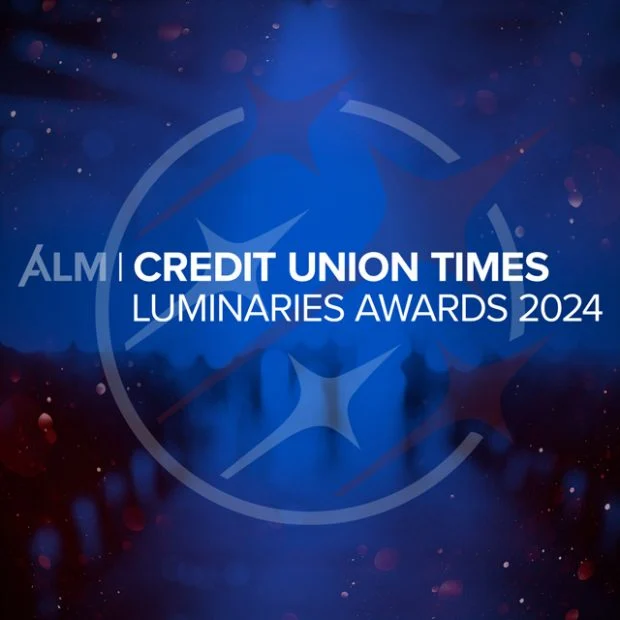January was, once again, dividend distribution season for Dow Chemical Employees' Credit Union, just as it had been for the past 50 years.
However, this year, the $1.4 billion Midland, Mich., institution made headlines for the amount of wealth it redistributed to its 57,000 members. On Jan. 1, members in good standing were set to receive a rebate of 75% of the total interest they paid on eligible loans during 2014, an additional 75% of dividends earned on shares and deposits during 2014 and check card rebates that included 0.125% of signature-based transactions and one cent for each PIN-based transaction made last year.
In real dollars, that meant a member payday of some $13.2 million, according to Dennis Hanson, DCECU's president/CEO. This amount was ahead of both 2012, when the credit union issued total rebates of $11.6 million, and $11.3 million in 2013.
This year's figure translates to an average payback of $231 per member, Hanson said. “We think that's a lot.”
Redistributing excess funds to members through year-end dividends is a time-honored credit union tradition, but some have long ago abandoned the practice in favor of finding other ways to use the funds to increase and improve member service.
“We don't do special year-end dividends, but it certainly is a great marketing technique,” Jim Blaine, president/CEO of $29.5 billion State Employees' Credit Union in Raleigh, N.C., said.
“We simply pay higher deposit rates and charge lower loan rates throughout the year,” Blaine explained. “We like the year-end dividend concept for the positive member reaction, but have never been able to easily determine which member should get how much at year-end.”
Although once a service, year-end dividends are now no longer offered to members of the $485 million Air Academy Federal Credit Union in Colorado Springs, Colo., according to Glenn Strebe, AAFCU's president/CEO. Once again, the reluctance is based on how much of a rebate to issue to which members, he said.
“I am not an advocate of dividends because some of your best customers may not provide as much net income as other members,” Strebe said. “I'm not sure there is a truly equitable way to give the money back and I'm not sure whether it would be impactful anyway.”
If Strebe had his way, excess funds would be invested to create local small business incubators, build affordable housing or in some other way, help financially strengthen and grow the credit union's community, thereby, extending the institution's influence and helping members as part of the bargain. The credit union–sponsored Air Academy Education Foundation, which supports financial literacy, could be a springboard for other such organizations with similar social missions, Strebe said.
“I don't know if that's operationally or legally possible, but I think I know what NCUA would say,” he said.
Year-end dividends have never been a part of the benefits scenario and still aren't for the 886,677 members at the $12 billion Boeing Employees Credit Union in Tukwila, Wash., according to Kathy Elser, BECU CFO and SVP of finance and administration.
“We have chosen to give back to our members throughout the entire year via better rates,” she said.
Read more: Aren't dividends more member friendly?
Whether it's an annual dividend or simply more member-friendly rates, philosophically, credit unions strive to operate in the best interest of their member-owners. Sometimes, it's simply a matter of different strokes for different credit union folks, but it should be up to credit union management and boards to determine how excess funds are best managed to provide maximum member returns, according to Dennis Dollar, principal partner with consulting firm Dollar Associates LLC in Birmingham, Ala., and himself, a former credit union CEO.
“There are a number of ways that credit unions demonstrate the ethos of the movement by returning to the members any earnings that are beyond those required to be maintained by law, ranging from higher monthly dividend rates, lower loan rates, paying dividends on checking accounts to expanding service options, utilizing more member-friendly technology or building closer branches,” Dollar explained.
“Certainly, an end-of-year special dividend is another one of those options, but I cannot see any of the ways credit unions return excess earnings to their members as being more 'credit-union-like' than another,” he added.
Member benefits take on multiple forms, including reinvestment in expansion, new technology and increased services designed to make the credit unions more efficient and provide better member services, but some benefits aren't as visible to members as others.
“An important point here is that capital belongs to the members and is primarily used as a safety net for the current and future risk inherent on and off the balance sheet and income statement,” William Kennedy, CFO for the $152 million Interior Federal Credit Union in Washington. “Any excesses beyond that should be considered in infrastructure improvements for the benefit of the members.”
Interior Federal does not normally issue year-end member dividends, but would if there were significant excesses beyond the credit union's financial goals, Kennedy said. But like other credit unions, determining which members received what level of dividends can be a challenge for institutions that want to issue rebates equitably. Interior Federal maintains a position of having some the best member rates among its peer group, which Kennedy considers a more than adequate return to members.
Read more: What if members feel entitled to the payout?
Another of Kennedy's concern is the time when year-end dividends become an expected member benefit, and the absence of such dividends sends the wrong signal to members.
“Credit unions trumpet these dividends as just one more differentiating factor of who we are by returning back to the member,” Kennedy said. “The challenge I see is when members come to expect this. If for any reason a credit union decided not to pay a dividend, it could create a red flag that something might be wrong, when in fact it really isn't.”
Such potential misperceptions don't concern DCECU, which has given annual members rebates for more than five decades, Hanson said. It's part of the credit union's individual ethos and a guiding principle, he added. The board expects to pay an annual dividend as much as the membership expects to receive it. Establishing the right net income ratio is the first step.
“We require a minimum of 10% with a target of 11%,” Hanson said. “We want to be well-priced to begin with, so we shoot for pricing in the upper quartile of our pricing landscape. If we have money left over we give it back to members.”
Hanson said while DCECU has a closed field of membership and isn't really growing and operates efficiently with one office and at about 50% of the average cost of its peer group institutions. Reduced expenses help fuel the dividends program and maintain a low-rate, high-service environment that gives the credit union the best of both worlds.
“Patronage dividends and rebates are a differentiator,” Hanson said. “The members come first and that's the way we try to convey that message. You won't find this in the for-profit world.”
Dividends also have a practical application that can help credit unions balance their books in a very member-friendly way, according to financial consultant Mike Higgins Jr., a partner with consulting firm Mike Higgins and Associates in Kansas City, Mo.
“This is real simple. The credit union board should have defined a range of how much capital it wants to maintain relative to the credit union's risk and the ROA range in which it wants to operate,” he explained. “Once you start operating outside of those ranges, you have to start giving back to the members.”
Credit unions with more than 13% ROA for an extended period of time are what he calls hoarders, Higgins said. Some situations may require more capital and the NCUA's new risk- based capital rules could change the face of the dividends landscape entirely. The current approach is something that can help balance the scales when it comes to income versus member service, he noted.
“It's a way of truing up member benefits,” Higgins said. “Credit unions sometimes say one thing and then don't back it up. If we've found we've extracted too much money from members, we're going to make it right.
“It's a way to absolutely maximize member benefits,” he added. “This stuff is blindingly obvious and I wish more credit unions would approach it this way.”
© 2025 ALM Global, LLC, All Rights Reserved. Request academic re-use from www.copyright.com. All other uses, submit a request to [email protected]. For more information visit Asset & Logo Licensing.







